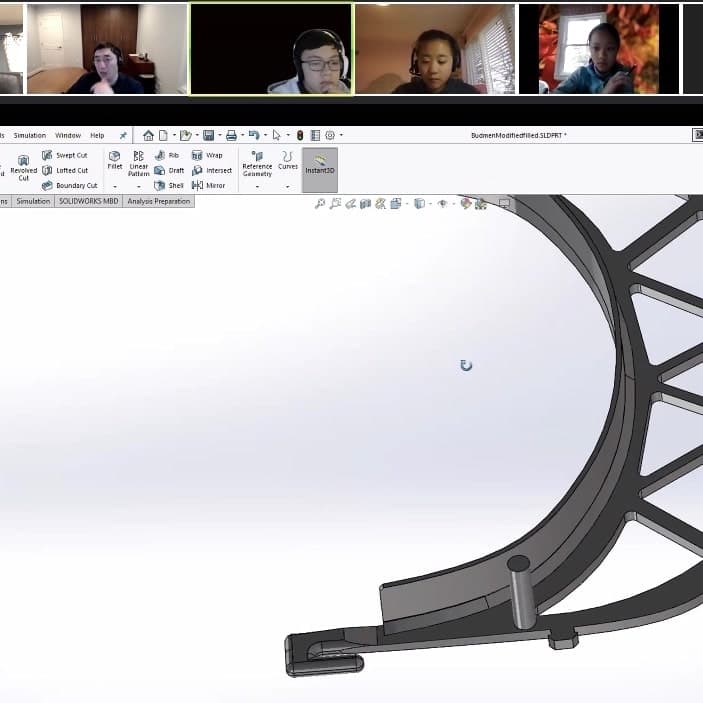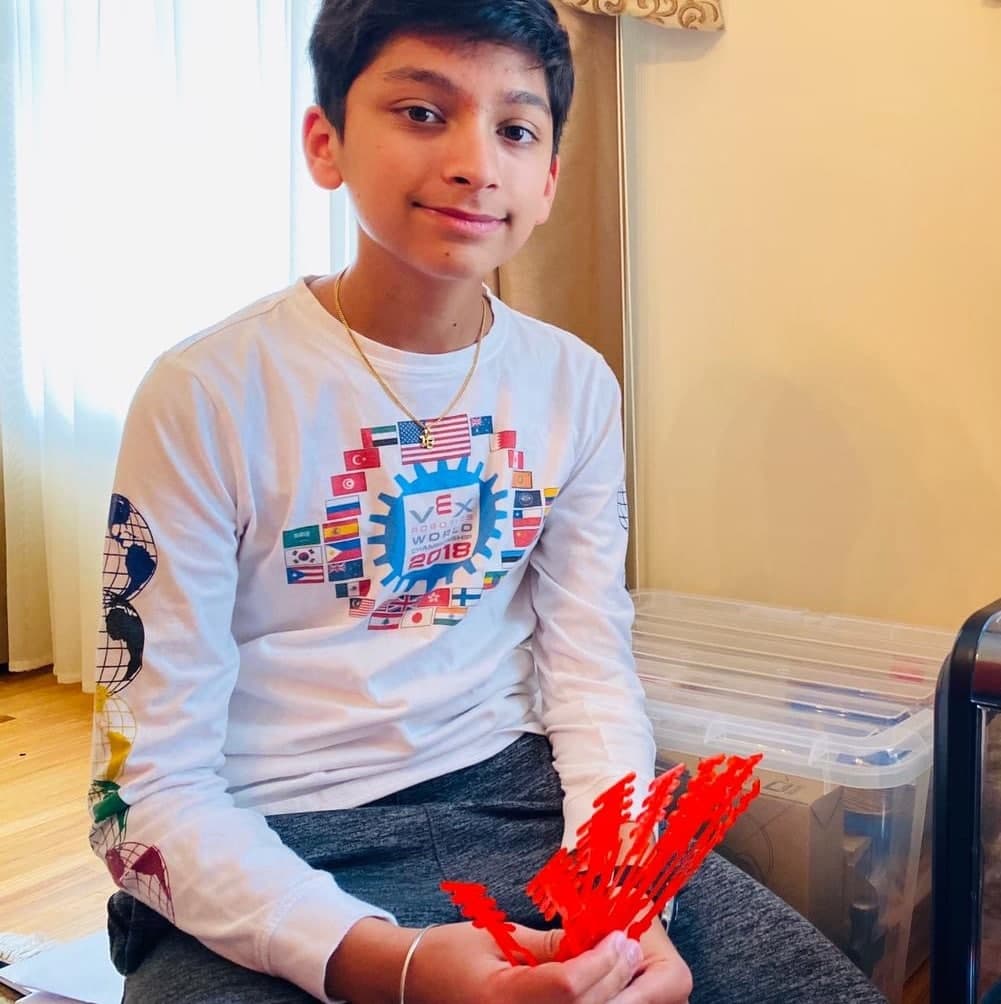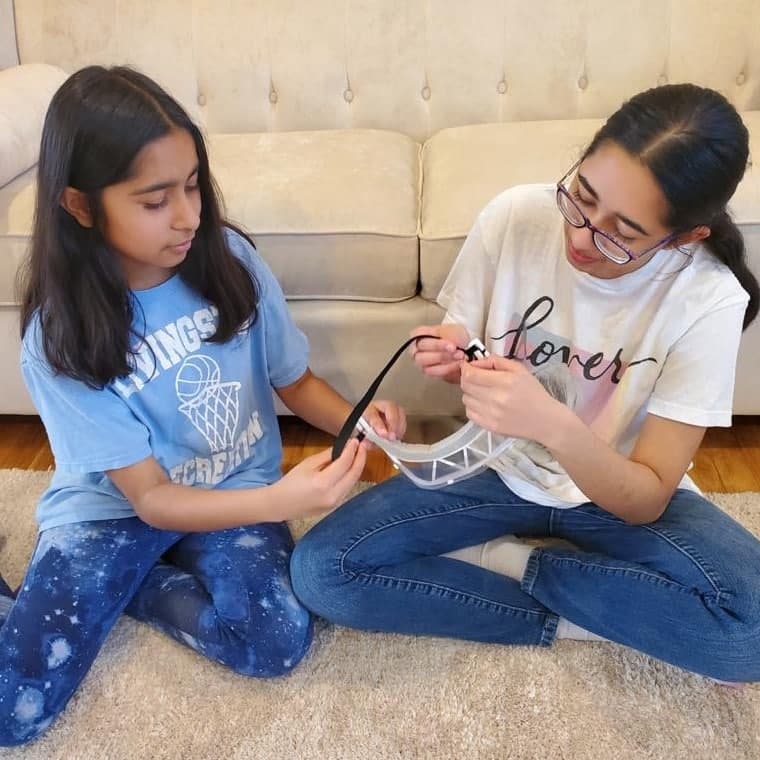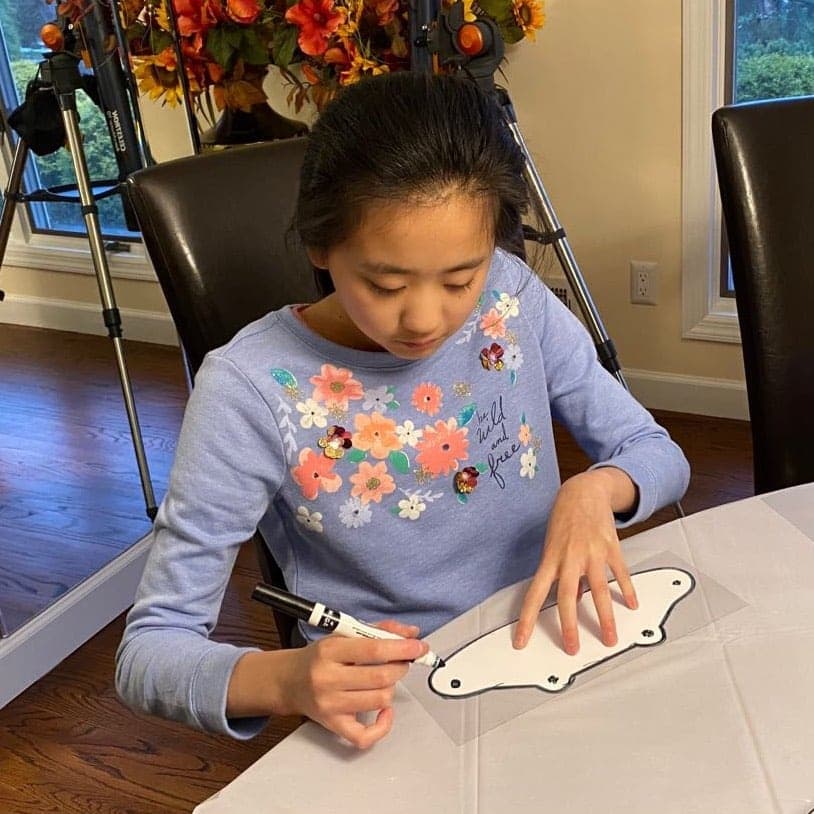Youth: The Hope and Future of Our Planet
Meet the Livingston Robotics Club, a group of students who stepped up to apply their learning and skills to do the impossible.

"This was many kids’ first real-world application of the STEM principles...we all were proud to have made this contribution."-Phil Molzer, Livingston Robotics coach
 Valentina Zheng and Qi Ding make the sheets for the shields.
Valentina Zheng and Qi Ding make the sheets for the shields.
The COVID-19 pandemic swiftly and dramatically changed life as we know it. This was especially true for our youngest members of society when schools closed. Suddenly students found themselves at home, learning remotely and physically separated from their classmates. For the middle school and high school members of the Livingston Robotics Club in New Jersey, this was their chance to make a difference. They were determined to solve a real world problem: of a lack of PPE during the COVID-19 crisis.
The Livingston Robotics Club started 3D printing Budmen face shields. But with just a few printers on hand, it was taking too long and they were quickly using their limited supply of filament. So they decided it was time to iterate on the Budmen design. The club members in grades 7-10 started an inter-team collaboration to find a faster and more efficient use of their resources. During the day they would remotely attend class, then after school virtually collaborate to divide the design and engineering tasks among members.
They dove head first, immersing themselves into the iterative design process, learning every step of the way and improving using critical thinking skills. They gathered lists of suppliers and developed a distribution model to produce and distribute shields. They pulled together their friends and family to help test and revise their designs. Their final product, called the “Livingston Shield,” reduce material cost, brought new innovative design solutions to the table, and uniquely capitalized on the resources the students had at hand. Most importantly, it was well-received by medical staff and professionals. The students were able to print, assemble, and ship thousands of their Livingston Shields nationwide.
Phil Molzer, who volunteers as a robotics coach of Livingston Robotics Club stated, "This was many kids’ first real-world application of the STEM principles...we all were proud to have made this contribution."
Even while quarantined in their own homes, the students in the Livingston Robotics Club found ways to rally together to make a difference in the lives of others and in their community. Together, one idea at a time, they conquered the obstacles in front of them to make a change in the world. The future is a brighter place for all because of hard working students like these who are unafraid to learn and invent to do the impossible.
To learn more about Livingston Robotics ClubVisit Livingston Robotics or follow their COVID response Livingston Robotics COVID Response.
 A remote design session with team members from three LRC teams.
A remote design session with team members from three LRC teams.
 Armaan Lerner uses his printer to make ear savers and Budmen strap locks.
Armaan Lerner uses his printer to make ear savers and Budmen strap locks.
 Anika and Alicia Gupta put together a face shield.
Anika and Alicia Gupta put together a face shield.
 Shining Wang works on the top shield.
Shining Wang works on the top shield.
Images courtesy of Livingston Robotics Club.
